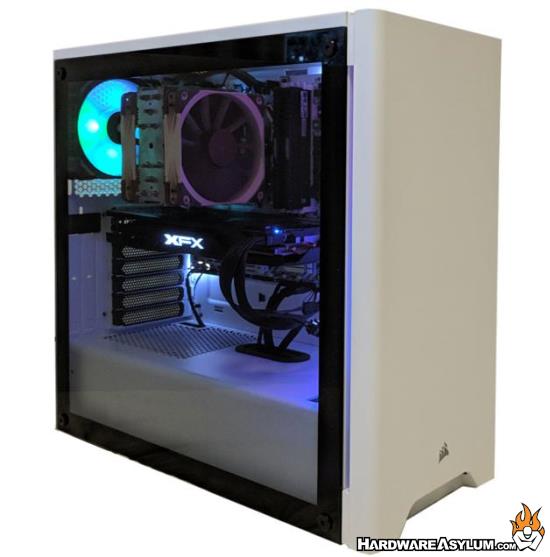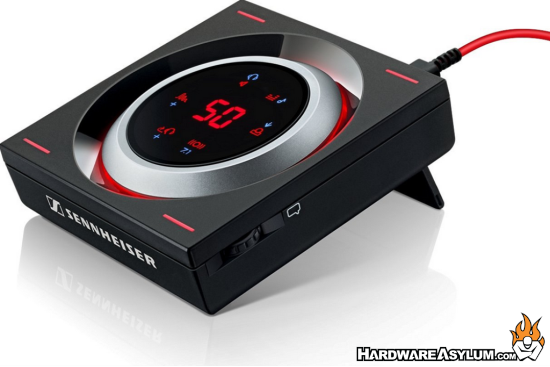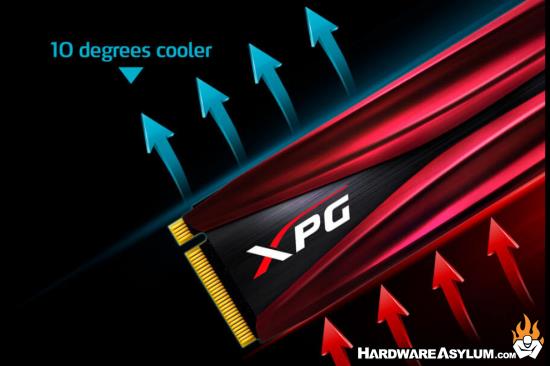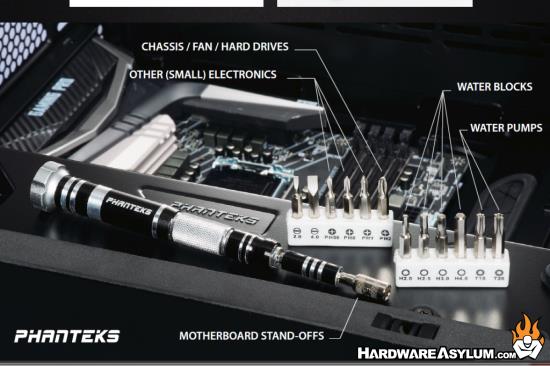Tech News
-
GeIL Super Luce RGB SYNC Gaming Memory Now Supports Most Motherboard Lighting Control Apps
TAIPEI, TAIWAN, MARCH 21, 2018 - One of the world’s premier PC components and peripheral device manufacturers, GeIL, has announced that their popular Super Luce RGB Sync Gaming Memory Series now perfectly supports the ASUS AURA lighting control app allowing users to enjoy the seamless RGB lighting effects from the motherboard, RGB light strips, and the memory all in perfect synchronization. Super Luce RGB Sync Gaming Memory also supports GIGABYTE Fusion and MSI Mystic Light on selected motherboards.
“GeIL is a pioneer in the computer component and peripheral industry, and the company’s team is proud to announce the streamlined functionality of their Super Luce RGB Sync Gaming Memory system. This highly anticipated platform offers gamers the lighting capabilities they demand,” Said Jennifer Huang, VP of Global Sales and Marketing.
GeIL Super Luce RGB Sync Gaming Memory is verified for use with Intel Core i7, i5 and i3 CPUs, as well as combinations of AM4 motherboards and AMD Ryzen processors. Available in 2133MHz to 3200MHz frequencies, GeIL Super Luce RGB Sync Gaming Memory Series offers a sleek design with the lighting effects preferred by gamers. It features a cable-free design that system builders can enjoy and is supported by the popular lighting control apps including ASUS AURA, GIGABYTE Fusion, and MSI Mystic Light.

GeIL Super Luce RGB Sync Gaming Memory Series can be synchronized with ASUS AURA and across the 12 lighting effects including static, breathing, color cycle, rainbow, comet, flash and dash, wave, glowing yoyo, starry-night, strobing, smart, and music. Gamers can also tweak and customize each lighting effect to better match their illuminated gaming build.
Thanks to ASUS AURA, RGB LED lighting control app is now compatible with non-ASUS motherboards. To get started, users simply download ASUS AURA from the ASUS website. Even in the absence of lighting effect synchronization between the motherboard and other components, ASUS AURA allows users to control the lighting effects of Super Luce RGB SYNC installed on non-ASUS motherboards.
GeIL Super Luce RGB Sync Gaming Memory Series also supports GIGABYTE Fusion, and MSI Mystic Light, which allow users to select the same lighting effects for the motherboard, the memory, RGB lighting strips and other components when the latest BIOS and lighting control apps are installed. GeIL Super Luce RGB Sync Gaming Memory Series can support GIGABYTE Fusion on GIGABYTE X299, X399, Z370 and newer chipset-based motherboards as well as MSI Mystic Light on MSI Z370 and newer chipset-based motherboards.
While Super Luce RGB SYNC provides a cable-free lighting solution, GeIL’s EVO X ROG-certified RGB Gaming Memory supports the ASUS AURA lighting control app with a connection between a 4-pin header and ASUS ROG motherboards. EVO X ROG-certified RGB Gaming Memory offers a lighting module that can be fully customized and will synchronize with the ASUS ROG motherboard, graphics card, and other RGB UI compatible components to deliver a polished, leading-edge illumination experience.
More information on GeIL’s Super Luce RGB Sync Gaming Memory can be found at http://www.geil.com.tw/products/list/id/173, where all products within the series are listed.
-
NVIDIA P102-100 Cryptomining Card Surfaces
I seem to remember that ASUS had a dedicated Crypto card but was based on a GTX 1060. Seems this card is different in that it is using a modded GP102 chip which normally powers the GTX 1080 Ti and Titan.
Of course the card is then tweaked for mining and even has published Hashrates. Will a dedicated, and faster, chip be enough to keep miners from buying up all of the retail cards??
The GP102-100 should sound familiar to most enthusiasts since it employs the same GP102 chip used in the mainstream GeForce GTX 1080 Ti and GTX Titan Xp graphics cards. Nevertheless, NVIDIA made a few modifications in order to maintain the hash rate while lowering the price at the same time.
I think this will curb the market a bit. Miners will start buying the dedicated cards as they promise to deliver better performance. Of course when GTX 2080 or GTX 1180 is released there will be another land rush to replace dedicated CryptoCards with faster GPUs and we will be back to square one.
Overall it will be interesting to see what ends up happening AND if people keep calling it a video card even though it has no video output. I think at that point you can call it a daughter board.

-
Thermalright True Spirit 120 Direct Review @ HT4u
Thermalright, now there is a name I haven't heard in a long time.
Funny story, one of the best aircoolers I have ever used is from Thermalright along with the best waterblock. Sure the Danger Den M6 walks over EVERYTHING but the TR block back then was the best thing since sliced bread.
Sadly, Thermalright kinda fell off the map and I often wonder if they will ever fully recover.
Thermalright hat im letzten Jahr seine True-Spirit-Reihe um ein weiteres Modell ergänzt. Der True Spirit 120 Direct blickt auf recht kompakte Maße und richtet sich an Bereiche, wo es auf gute Kühlleistung, aber geringeren Platzbedarf ankommt. Dazu versucht man sich über den Preis von unter 40 Euro attraktiv zu zeigen. Unser Test zeigt die Stärken und Schwächen des Thermalright-Kühlers.
Seems very german but, who am I to judge. The cooler is a core contact design based on four heatpipes and standard 120mm radiator. Pretty good combo but a far cry from the power of the Venomous X
-
Corsair Carbide 275R PC Chassis Review @ Guru3D
So, I'm looking at this case and the first thing that runs through my mind is. "Holy crap this looks like the EVGA DG-77". And not so much because it is white but the interior design, tempered glass side panel and flat (we have no cooling) front panel.
Sure it isn't a 1:1 copy but you can tell there are common elements between the two.

Today we put the new Carbide 275R chassis though our testing paced for a review here at Guru3D. The 275R (and cases like it) aim to continue the more recent push toward more compact, less space heavy systems. She's purteeeh alright.
I'm all for small cases and at one time I felt the Mini ITX was the motherboard form factor of the future. Seems many mobo makers didn't agree and figured the Micro ATX was the way to go. Which makes sense considering that you can't sell bundled GTX 1080 Ti video cards when your motherboard only has one expansion slot.
Not to mention lack of M.2 and the intel push to get people OFF SATA and on to NVMe for the license money.
-
Netgear Nighthawk X6S Tri-Band Mesh Extender Review @ HotHardware
Need more range? Wi-Fi connection issues got you down?. Are you sitting right next to the access point and still cannot connect?? Then I have a review for you. Yes! For one simple click you too can read about the Netgear Nighthawk X6S Tri-Band Mesh Extender. This Extender does it in the kitchen, it does it in the bathroom and yes, it even does it in the bedroom *blush*.
It does it everywhere!
Netgear’s Nighthawk X6S Tri-band WiFi Range Extender (EX8000) seeks to solve your wireless networking woes by taking the FastLane3 technology that we praised in the Orbi AC3000 and implementing it in a standalone range extender that works seamlessly with any router – even the combo cable modem router that your ISP may have forced you to lease...
OMG, what a hook to get you even more excited about learning more about the Mesh Extender. I mean "may have forced you to lease (dot, dot, dot). Lease what?, are you leasing the extender?? Does this lease include free internet for life???
Click to find out more!
-
GLACIER Series C350ip & C350ap CPU Waterblocks from Phanteks
Walnut, California, February 26th, 2018 – Phanteks, the award winning thermal cooling and chassis manfacturer, is excited to introduce the latest additions to the Glacier Series, the C350ip (Intel) and C350ap (AMD).

The Glacier C350ip and C350ap features a large copper base in high quality nickel finish, acetal top, and integrated high density cooling fins. The fins are fine-tuned to 0.4mm wide and designed with extra high fins (5mm) for improved conductivity. The C350ip and C350ap are RGB-free and focus solely on performance. Tailored with Viton O-Ring, the C350ip and C350ap are durable, resistant to extreme temperatures and retains sealing performance for long periods of time. The Glacier C350ip and C350ap can be intergrated into any enthusiast system without compromise.
The C350ip and C350ap CPU Water Blocks are available in March, 2018. -
Phanteks Enthoo Pro Tempered Glass Case Review @ ThinkComputers
Traditional cases need love too. Or so I am told.
With high performance and flexibility as the pillars of the Enthoo Pro’s design, it was only natural for Phanteks to evolve the case’s design by adding a tempered glass side panel. Taking a design that allows for lots of airflow and liquid cooling options, without a premium price, Phanteks’ inclusion of a hinged TG side panel just makes sense. Follow us as we take a look at the Phanteks Enthoo Pro Tempered Glass Case.
Of course I am talking about another tempered glass case conversion and just any case but the Enthoo Pro from Phanteks.
If you are curious about the Pro from Phanteks be sure to check out the link or visit Phanteks directly . I should mention that there are two versions of the Pro. The standard Pro like the one featured in this review AND a Pro M which uses the EVOLV center and is really a much better canvas for modding.
-
Sennheiser GSX 1000 Audio Amplifier @ TechPowerUp
It is not every day that you see an Audio Amplifier with a digital display and yet, here you go.

The Sennheiser GSX 1000 Audio Amplifier is a beautiful external USB sound card equipped with the best 7.1 virtual surround sound system we've heard so far, and a host of other interesting features primarily aimed towards hardcore gaming.
If I could be so bold in saying, this thing is damn ugly. I like the interface. The grey ring looks like a volume knob and the digital display is large and in change but the square shape and mini kickstand is just stupid.
But that's me, and I could be wrong. Maybe it’s a terrible tragedy.
-
ADATA XPG Gammix S10 M.2 NVMe SSD Review (512GB) @ The SSD Review
I have to be honest here, I saw S10 in the title and was wondering what a mid-sized truck from Chevy had to do with NVMe storage. Then I saw it was from ADATA and it all clicked.
Absolutely nothing.
Yep, it's true, one of the most popular pickups in the mini trucking scene really has nothing to do with computer storage and last I remember the S10 has never made it to Taiwan and if it had with the amount of rain they get it would have quickly rusted out. So, I can only conclude that ADATA is working on something big for their high performance storage market and was hoping I would notice.

Last year, ADATA’s gaming branch, XPG, released their newest product line, the Gammix series, and within that, they released the XPG Gammix S10 M.2 NVMe SSD. This SSD is quite sleek and high-end looking, with its flashy red with black heatsink and blacked out PCB, but its performance doesn’t quite match its looks. Although one would think that because it comes with an added heatsink that it is one of the fastest hottest running SSDs out, the truth is actually the contrary. It features a Silicon Motion SM2260 controller and Micron’s first gen 32-layer 3D TLC NAND, which is the same hardware as the slowest NVMe SSD we have tested to date, the Intel 600P. It’s not a terribly bad thing though, it’s just not quite the beast one would be led to believe it is judging by appearance alone. It is, however, stated to deliver faster write performance than the 600P, so there is an improvement we look forward to seeing in today’s testing.
Hey, Silicon Motion SM2260. That is the same controller Crucial is using on their MX500 and BX300 SATA drives. Seems like a good thing.
On the positive the XPG Gammix S10 does come with its own heatspreader.
-
16 Piece Computer Tool Kit From Phanteks
When building a computer there are three things you will need.
- Tools
- Computer Parts
- Some idea that certain parts attach to other parts
Notice that I listed "Tools" at the top of the list. Well, the reason for that is simple, even with tool-less cases there are certain parts of the computer assembly process that require a screw driver or a wrench (spanner for "other" parts of the world)

So what tools do you need? That is where Phanteks comes in, they have put together a very solid set of tools that should cover almost every tool you will need to assemble a computer, even some bits specific to watercooling components like pumps and blocks.
Ideal for first-time builders and enthusiasts, the 16 pieces tool kit includes: Allen wrench, 1pc magnetic extendable screwdriver handle, 13pcs bits (H2.0, H2.5, H3.0, H4.0, T15, T20, PH00, PH0, PH1, PH2, 2.0, 4.0, 5.0mm hex socket bit), and flexible shaft. Compact for travel, the included black case helps keep the tools in place and organized.
90% of computer building requires a standard #2 Philips screwdriver. You might need a socket to install a motherboard standoff and a standard screw driver to take the lid off the paint you'll use to customize the case but, for the most part a #2 is all you need.
And.. wouldn't you know it, Phanteks includes one.

